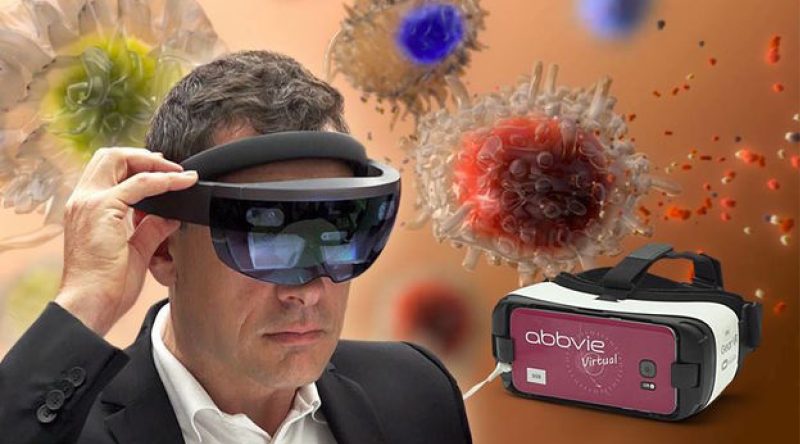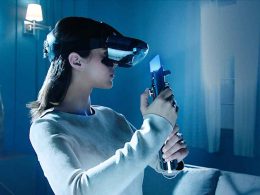Pharmaceutical company AbbVie wants to make intestinal diseases more tangible with virtual and augmented reality apps - This is both for the education of patients and for the training of specialists.
Intestinal diseases affect countless people. The unpredictable illnesses, which often lead to severe diarrhoea, nausea and abdominal pain, are stressful for those affected. Despite its prevalence, the topic is still a taboo subject for many. VR and AR are now being used as new means of communication to help people talk about it, as well as for educational and research purposes.
Explaining visually with VR and AR
The Austrian biopharmaceutical company AbbVie has developed applications for virtual, augmented and mixed reality technologies to help understand chronic inflammatory bowel diseases. The app uses Microsoft's HoloLens augmented reality glasses to superimpose virtual numbers, data, text, graphics and other objects, such as the schematic structure of cells and molecules, into real space. The virtual 3D objects can be moved, enlarged or hidden by the user. If several users use the app in conjunction with a pair of glasses at the same time, they all see the same objects and thus share a virtual space.
The VR app, on the other hand, is more vivid. The user is immersed in the virtual model of an intestinal tract, for example, which can be traversed. By taking a targeted look, you can zoom in and display the pathological tissue in more detail, for example. Some doctors who were able to try out the solutions in field trials were particularly enthusiastic about the latter function. The VR glasses are particularly practical for explaining the facts to patients. "In the exchange of information between colleagues as well as doctors and patients, the vivid visualisation is more powerful and leaves exciting impressions," says Gernot Zauhar, specialist in internal medicine at the Elisabethinen Hospital in Graz.
Means of communication with patients
"This technology could be used as a means of communication with patients to clearly demonstrate which treatment options are possible," says Barbara Sutter, a specialist in internal medicine at Hörgas-Enzenbach Regional Hospital. For example, patients could be shown the positive effects a therapy would have on the intestinal mucosa.
Training tool for specialists
But there is also great potential in other areas. "As far as VR glasses are concerned, I can very well imagine them being used in training - if you can show young colleagues realistic case studies and where it is also possible to interpret different findings," explains Alexander Moschen, Senior Consultant at the University Clinic for Internal Medicine Innsbruck. Especially in the field of endoscopy, this interactive visualisation would work better than simple images.
However, virtual reality glasses could also be used in exchanges between researchers and experts, for example to visualise and discuss findings and hypotheses together. AbbVie itself sees the use of VR and AR in medicine as an important milestone. "I'm fascinated by it, it opens up new dimensions, it's exciting to think about how you can make a difference with this technology," says Ingo Raimon, General Manager of AbbVie in Austria.
Source: futurezone.at









